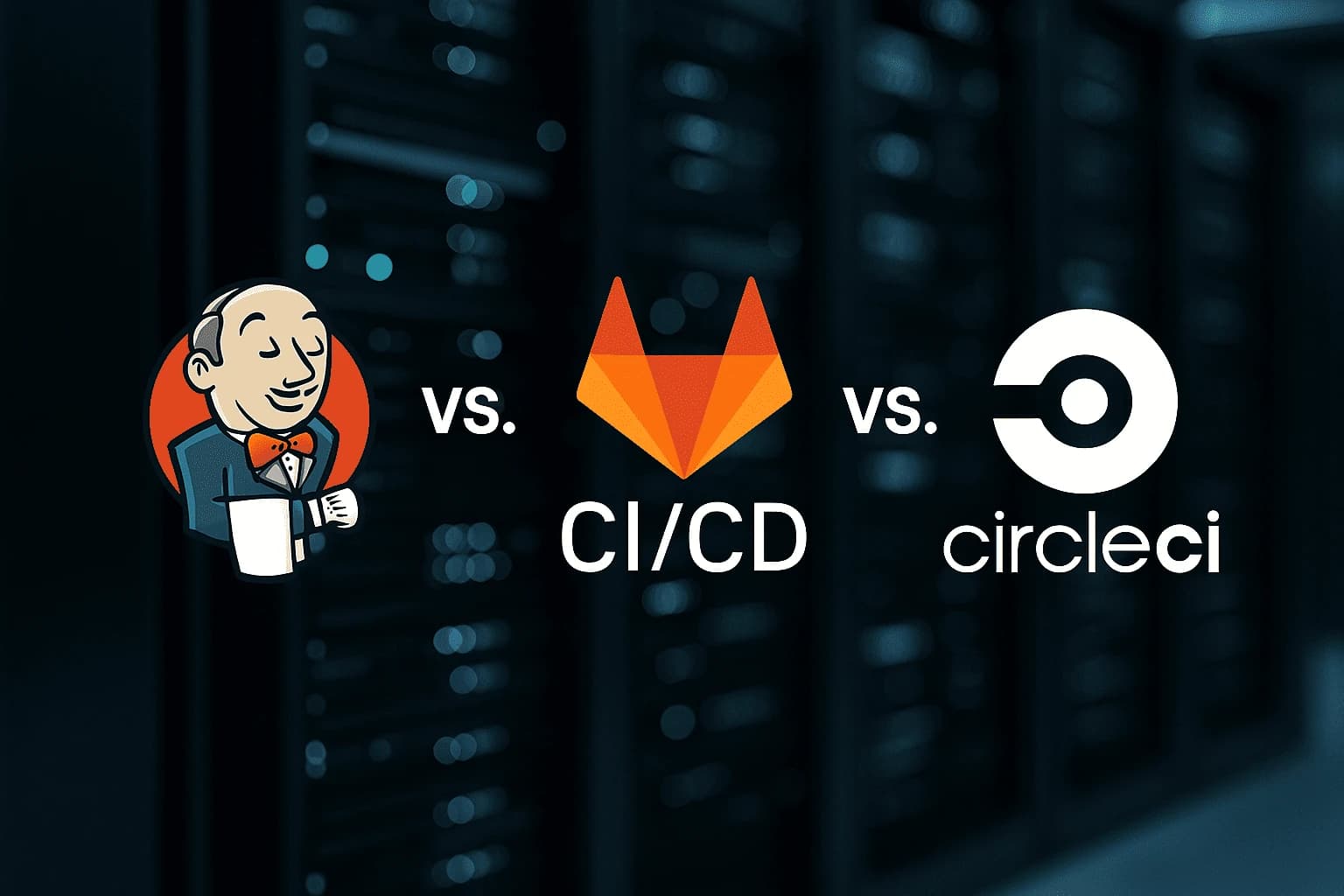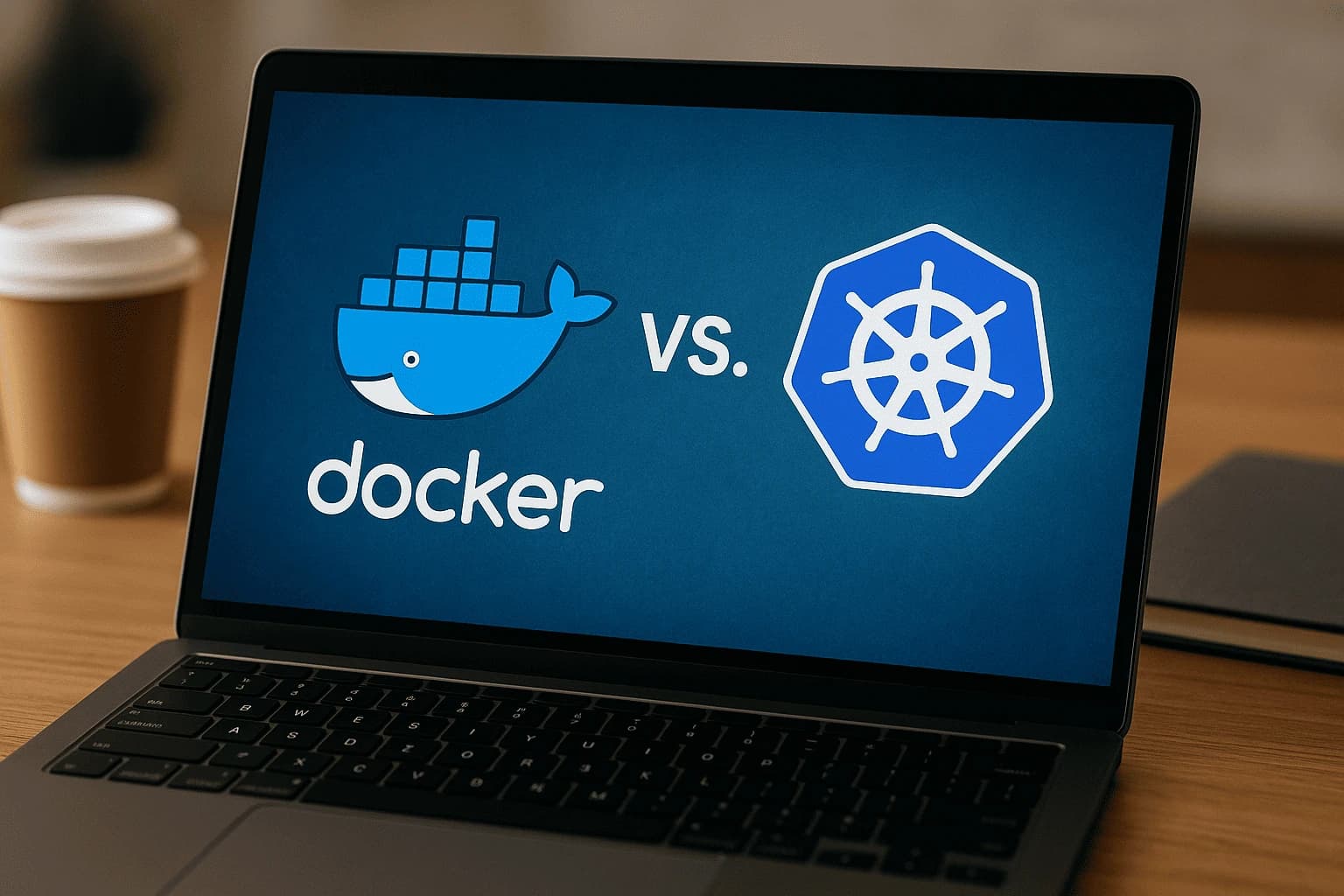
* All product/brand names, logos, and trademarks are property of their respective owners.
In 2025, the DevOps landscape is evolving faster than ever. With teams pushing for rapid software delivery, automated testing, and seamless deployment across platforms, choosing the right CI/CD (Continuous Integration/Continuous Deployment) tool has never been more critical. Among the top contenders, Jenkins, GitLab CI/CD, and CircleCI consistently rank as the leading automation solutions driving modern DevOps pipelines.
But which one is truly best suited for your needs in 2025?
Each tool offers unique strengths—Jenkins is known for its massive plugin ecosystem and flexibility, GitLab CI/CD provides a seamless end-to-end DevOps experience within its platform, and CircleCI stands out for its cloud-native performance and speed. As organizations embrace microservices, containerization, and hybrid cloud infrastructures, the demand for smarter, faster, and more integrated CI/CD platforms grows.
This blog dives deep into the Jenkins vs. GitLab CI/CD vs. CircleCI debate by comparing their latest features, scalability, performance, integrations, and pricing models. Whether you're a startup aiming for fast deployment cycles or an enterprise looking for a robust and secure DevOps framework, this guide will help you make an informed decision.
We'll highlight real-world use cases, explore their compatibility with modern tech stacks like Kubernetes, and uncover how each platform aligns with the trends of 2025—like GitOps, serverless CI/CD, and AI-driven automation.
Ready to find out which CI/CD tool is right for your team in 2025? Let’s break it down.
Jenkins has long been favored by DevOps engineers for its flexibility, but this comes at a cost: its setup can be complex. Jenkins requires manual installation, plugin configuration, and server management—ideal for teams that want control but are comfortable with DIY infrastructure.
GitLab CI/CD, by contrast, offers a smoother experience. Since it's built directly into GitLab’s DevOps platform, users don’t need to install a separate tool. It auto-detects .gitlab-ci.yml files and runs pipelines right out of the box, making it incredibly beginner-friendly.
CircleCI excels in simplicity and speed. With native support for GitHub and Bitbucket, its cloud-based setup lets teams start building in minutes. Its intuitive UI and automatic pipeline detection mean even non-experts can get CI/CD up and running quickly.
Jenkins is the king of customization. It supports freestyle projects, scripted and declarative pipelines via Groovy, and integrations with any build environment. However, that flexibility demands expertise and regular maintenance.
GitLab CI/CD introduces a YAML-based syntax for defining pipelines. While not as granular as Jenkins in some scenarios, its ease of use and native integration with Git repositories make it a favorite for streamlined DevOps workflows.
CircleCI uses its own YAML configuration (.circleci/config.yml) and supports reusable workflows and parameterized jobs. It may not match Jenkins in terms of low-level control, but it offers the best balance between power and usability.
Jenkins dominates with over 1,800 plugins, from Docker to Slack, Kubernetes, and beyond. This makes it adaptable to virtually any tech stack—but also introduces potential plugin conflicts and maintenance overhead.
GitLab CI/CD doesn’t rely on plugins for basic functionality. Instead, it offers built-in features like issue tracking, container registry, and monitoring, creating a unified experience.
CircleCI offers native integrations with Docker, AWS, Slack, and more. While it doesn’t have a “plugin marketplace” like Jenkins, its ecosystem is tailored for modern cloud-native environments.
In summary, Jenkins offers unmatched flexibility, GitLab CI/CD shines with integration and simplicity, and CircleCI provides a sweet spot between speed and customization. Each tool serves different needs based on team size, technical skill, and project scale.
Jenkins, when self-hosted, relies heavily on how well the underlying infrastructure is configured. While it can deliver fast builds on powerful servers, its performance varies based on resource allocation and plugin efficiency. In 2025, many teams still use Jenkins in hybrid environments but must invest in DevOps resources to optimize it.
GitLab CI/CD offers reliable performance, especially on GitLab.com’s cloud runners. It’s built to work efficiently with Git repositories, reducing latency in triggering and executing builds. However, very large enterprise projects might need GitLab’s premium runners or self-hosted options to avoid bottlenecks.
CircleCI is optimized for performance in cloud environments. With dynamic scaling, Docker layer caching, and parallelism out of the box, CircleCI often outpaces both Jenkins and GitLab in raw speed. Its auto-scaling runners adjust resource usage based on workload, making it ideal for teams focused on speed-to-deployment.
In 2025, cloud-native architecture and Kubernetes integration are essential for scalable CI/CD.
Jenkins supports Kubernetes through plugins, but configuring it properly still demands DevOps expertise. Tools like Jenkins X have emerged to modernize Jenkins for Kubernetes, yet adoption remains limited due to complexity.
GitLab CI/CD has native Kubernetes support, allowing you to deploy, monitor, and scale apps directly from GitLab’s UI. It's a strong option for GitOps workflows and aligns well with modern DevSecOps trends.
CircleCI thrives in the cloud-native space. It integrates smoothly with Kubernetes, supports Docker natively, and provides first-class support for cloud services like AWS, GCP, and Azure. Its container-first approach makes it a go-to for serverless and microservices-based architectures.
Jenkins is open-source and free to use—but the real cost lies in maintenance, infrastructure, and DevOps time. For enterprises with in-house teams, it can be cost-effective, but scalability may require Jenkins Enterprise solutions or third-party support.
GitLab CI/CD offers a free tier with limited CI minutes, followed by tiered plans (Premium, Ultimate) that include enhanced features like advanced security, auditing, and performance analytics—ideal for regulated industries.
CircleCI provides a generous free tier and transparent pricing based on compute credits. Its usage-based billing suits startups and scale-ups well, while its enterprise plans support larger teams with dedicated support and advanced SLAs.
In essence, Jenkins gives maximum control but at a higher operational cost, GitLab CI/CD balances built-in features with scalable pricing, and CircleCI leads in performance for modern cloud environments. Your choice in 2025 depends on budget, scale, and technical infrastructure.
As DevOps practices mature in 2025, the demand for robust, scalable, and easy-to-use CI/CD tools is higher than ever. Whether you're deploying weekly, daily, or hundreds of times per day, your choice of automation platform can directly impact your team's agility, code quality, and delivery speed.
Jenkins remains a powerful choice for teams that value flexibility and complete control. It’s the go-to solution for legacy systems and custom workflows, but it requires more hands-on maintenance and expertise.
GitLab CI/CD offers an all-in-one DevOps experience that integrates source control, CI/CD, and security in a single platform. It’s ideal for teams looking for simplicity, GitOps readiness, and a seamless user experience—especially those already using GitLab.
CircleCI shines in modern, cloud-native environments. With its high-speed pipelines, Kubernetes support, and pay-as-you-go model, it’s built for teams that prioritize velocity and efficiency in a microservices or serverless architecture.
There’s no one-size-fits-all answer. The “best” CI/CD tool depends on your team’s structure, project size, deployment strategy, and technical expertise. This guide should empower you to evaluate Jenkins, GitLab CI/CD, and CircleCI through a 2025 lens—focusing on what matters most to your goals.
Need help choosing the right CI/CD tool or integrating it into your DevOps workflow? Reach out or explore more guides on our blog for tailored advice, use-case scenarios, and real-world examples.

25 July 2025

25 July 2025

26 June 2025
No comments yet. Be the first to comment!